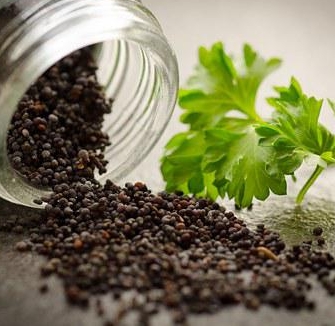
MATERIA MEDICA
Latin Name: Hibiscus spp., including H. rosa-sinensis, H. sabdariffa, H. syriacus
Family: Malvaceae (Mallow family)
Part Used: Flower (calyces)
Energetics: Sweet, sour, bitter, cool
Actions: Antibacterial, anti-inflammatory, antioxidant, antiparasitic, antiseptic, digestive, diuretic, refrigerant, sedative, stomachic, tonic
Uses:
- Bladder infection
- Cancer (adjunctive)
- Constipation
- Cough
- Diarrhea
- Fever
- Hangover
- Hypertension
- Liver support
Preparation & Dosage
- Sun Tea or Hibiscus Iced Tea: Use about 1 tablespoon of dried flower to 10 oz water. Let it steep or sit in sunshine until deeply colored and flavored—perfect with complementary herbs like peppermint or nettle.
- Hot Infusion: Steep in boiling water for a comforting hot brew.
Safety Considerations
- Allergies & Skin Sensitivity: While rare, topical use can sometimes cause dermatitis. Discontinue use if irritation occurs.
- Blood Pressure: Hibiscus may lower blood pressure significantly—those with hypotension or on antihypertensive medications should use cautiously or consult a healthcare provider [11].
Holistic Perspective
Hibiscus is summer in a cup—tangy, cooling, and vibrant. Whether sipped as a lantern-red iced infusion under the sun or infused into nourishing skincare, it’s an herb that offers gentle restoration. It cools a fevered body, soothes a tired metabolism, and refreshes the spirit—just in time for Fort Collins’ sunny days.
References
- USDA ARS. (2008). Study shows consuming hibiscus tea lowers blood pressure. Retrieved from https://www.ars.usda.gov/news-events/news/research-news/2008/study-shows-consuming-hibiscus-tea-lowers-blood-pressure/
- SCi… (2022). Regular consumption of hibiscus tea reduces blood pressure. Journal. Retrieved from ScienceDirect.
- Frontiers in Pharmacology. (2022). Hot Hibiscus extract exhibits antihypertensive effects. Retrieved from https://www.frontiersin.org/journals/pharmacology/articles/10.3389/fphar.2022.840478/full
- Verywell Health. (2025). Hibiscus tea significantly lowers high blood pressure. Retrieved from https://www.verywellhealth.com/does-hibiscus-tea-lower-blood-pressure-11761621
- MDPI. (2019). Pilot intervention: Hibiscus sabdariffa decoction for hypertension among IDPs. Plants. Retrieved from https://www.mdpi.com/2223-7747/10/5/1018
- Herbal Academy. (2020). Cooling herbs for hot summer days eBook. Retrieved from https://theherbalacademy.com/blog/cooling-herbs-ebook/
- Herbal Reality. (2024). Hibiscus for cardiovascular and urinary support. Retrieved from https://www.herbalreality.com/herb/hibiscus/
- Medical News Today. (2023). Hibiscus tea health benefits and risks. Retrieved from https://www.medicalnewstoday.com/articles/318120
- Health.com. (2024). Eight benefits of hibiscus tea. Retrieved from https://www.health.com/hibiscus-tea-benefits-8672032
- Chestnut Herbs. (2024). Medicinal benefits of hibiscus. Retrieved from https://chestnutherbs.com/medicinal-benefits-of-hibiscus/
- Verywell Health. (2025). Daily hibiscus tea may lower blood pressure. Retrieved from https://www.verywellhealth.com/best-time-to-drink-hibiscus-tea-to-lower-blood-pressure-11774134


